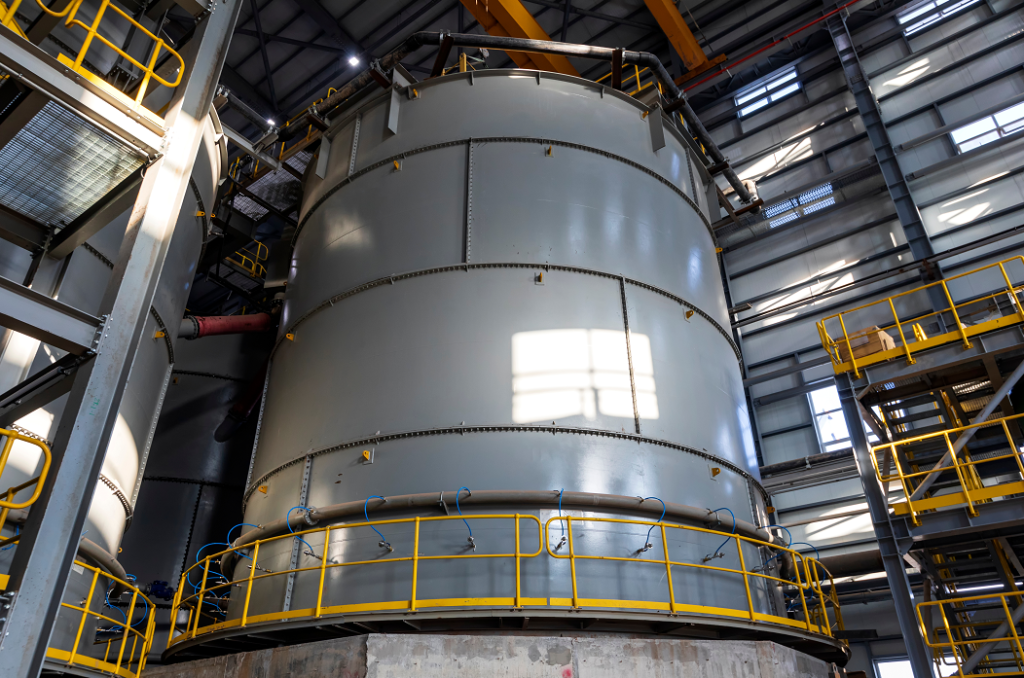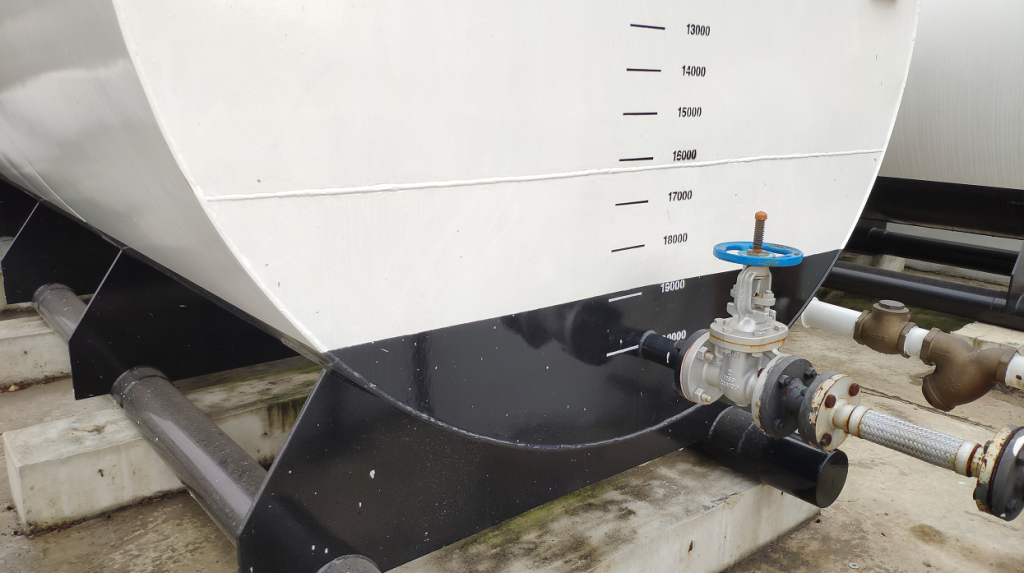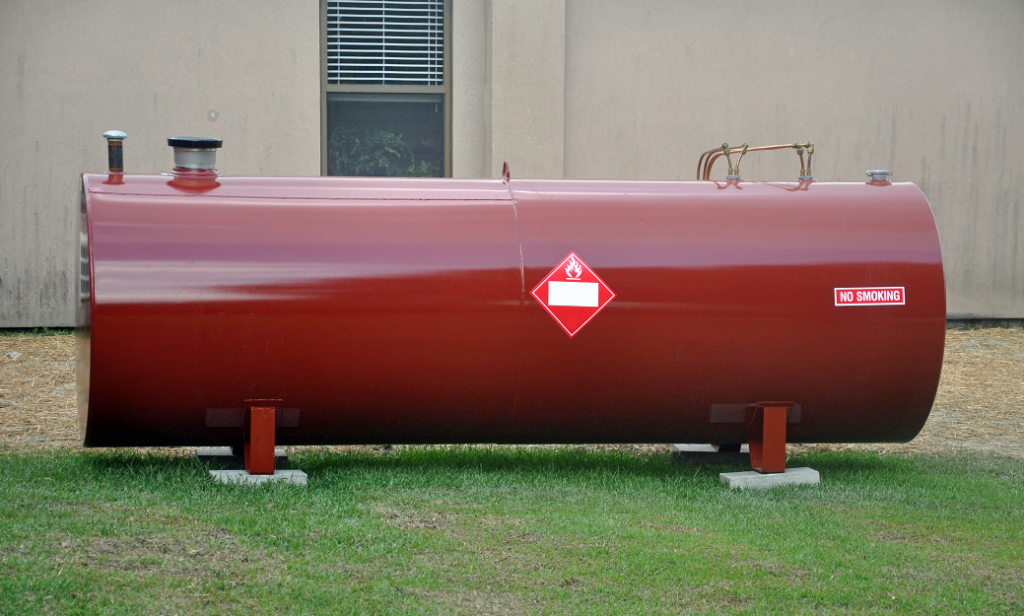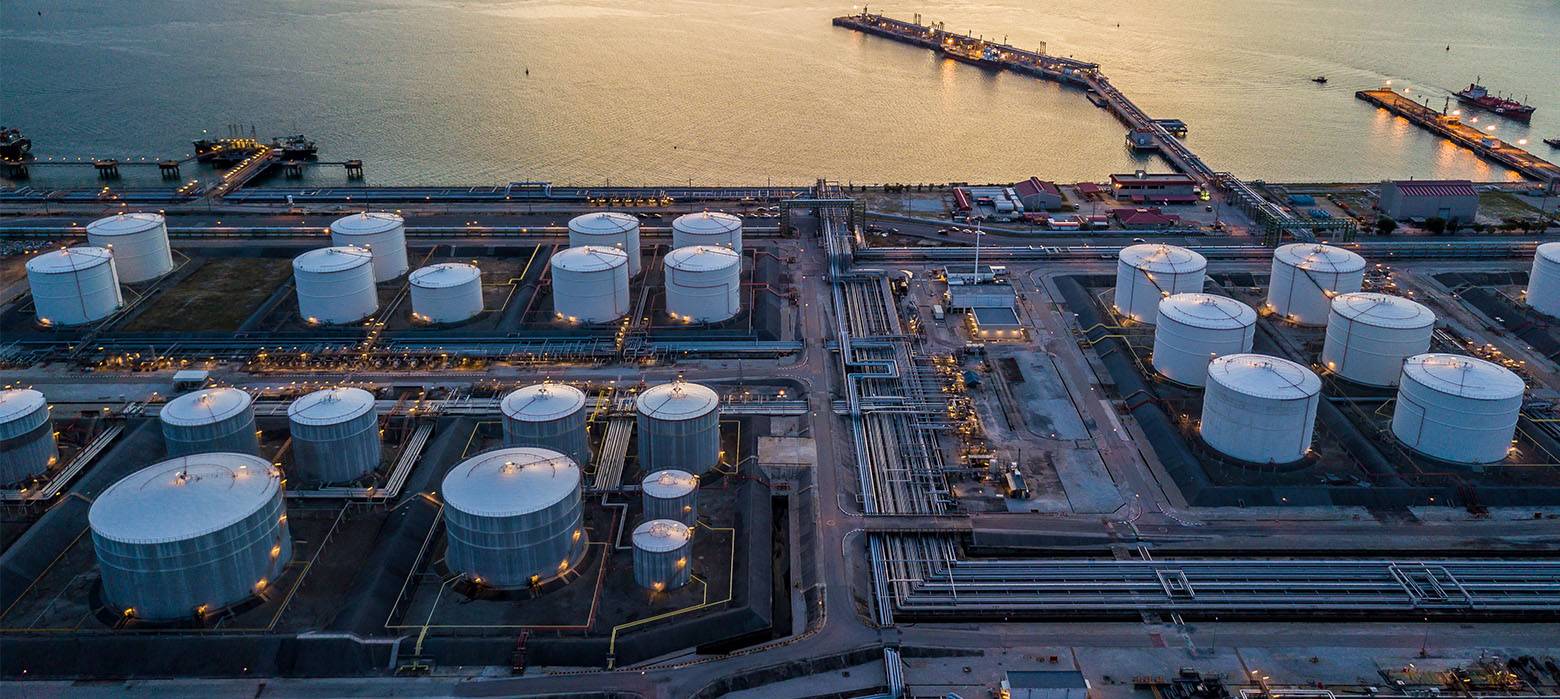- admin
- February 2, 2023
Large Above Ground Horizontal Storage Tanks: What They Typically Hold
Above ground storage tanks (ASTs) are large containers that are used for storing liquids and gases. They come in various shapes and sizes, with the most common being horizontal storage tanks. These tanks are designed to be placed above the ground, making them accessible for maintenance and inspection.
Horizontal storage tanks are typically used for the storage of liquids and gases, including:
Crude Oil

Crude oil is one of the most common liquids stored in above ground horizontal storage tanks. Crude oil is used in the production of various petroleum-based products, such as gasoline, diesel, and jet fuel. These tanks are designed to store large volumes of crude oil, typically hundreds of thousands of gallons. The tanks are equipped with safety features to prevent spills, leaks, and other hazards.
Diesel Fuel

Diesel fuel is another common liquid stored in above ground horizontal storage tanks. Diesel fuel is used as a fuel source for various types of vehicles, including cars, trucks, and buses. The tanks are designed to store large volumes of diesel fuel, which is then distributed to filling stations for consumer use. The tanks are equipped with safety features to prevent spills, leaks, and other hazards.
Propane and other gases
Above ground horizontal storage tanks are also used for the storage of gases, such as propane. Propane is a commonly used fuel for heating homes and businesses, as well as for cooking and grilling. The tanks are designed to store large volumes of propane, which is then distributed to homes and businesses for consumer use. The tanks are equipped with safety features to prevent leaks, spills, and other hazards.
Water
Above ground horizontal storage tanks are also used for the storage of water. These tanks are typically used for potable water storage, such as for residential and commercial use. The tanks are designed to store large volumes of water, which is then distributed to homes and businesses for consumption. The tanks are equipped with safety features to prevent leaks, spills, and other hazards.
Chemicals

Above ground horizontal storage tanks are also used for the storage of chemicals. These tanks are typically used for storing chemicals used in the production of various products, such as paints, plastics, and fertilizers. The tanks are designed to store large volumes of chemicals, which are then distributed to production facilities for use. The tanks are equipped with safety features to prevent spills, leaks, and other hazards.
Large above ground horizontal storage tanks play a crucial role in various industries and are used for storing various liquids and gases. These tanks are designed to store large volumes of materials and are equipped with safety features to prevent spills, leaks, and other hazards. Above ground storage tanks are accessible for maintenance and inspection, making them a convenient and safe solution for storing liquids and gases.
In conclusion, above ground storage tanks play a crucial role in various industries and are used for storing various liquids and gases. These tanks are designed to store large volumes of materials and are equipped with safety features to prevent spills, leaks, and other hazards. If you need to store liquids or gases, consider using large above ground horizontal storage tanks for a convenient and safe solution.
Above ground storage tanks can be either pressurized or non-pressurized.
Above ground storage tanks, also known as ASTs, are large containers used for storing liquids and gases. These tanks are placed above the ground for easy accessibility for maintenance and inspection. When it comes to the pressure within the tanks, there are two types: pressurized and non-pressurized.
Non-pressurized above ground storage tanks, or atmospheric storage tanks, store liquids and gases at atmospheric pressure. This means that the pressure within the tank is equal to the pressure of the surrounding environment. These tanks are commonly used for storing water, diesel fuel, and other similar liquids and gases. They offer a cost-effective solution for storage, as they do not require specialized equipment or systems to maintain pressure.
On the other hand, pressurized above ground storage tanks store liquids and gases at a pressure higher than atmospheric pressure. This type of tank uses a pressurized gas, such as nitrogen, to maintain a constant pressure within the tank. Pressurized above ground storage tanks are typically used for storing propane, natural gas, and other gases that require pressurization for safe storage and transport. The pressurization of these tanks ensures the stability and safety of the stored gases, and also helps to prevent the loss of product due to evaporation.
When choosing between pressurized and non-pressurized above ground storage tanks, there are several factors to consider. For example, the type of liquid or gas being stored and the specific requirements of the application will impact the choice between the two. Additionally, the cost of maintaining pressure within the tank must be taken into account, as pressurized tanks often require specialized equipment and systems.
In conclusion, above ground storage tanks are a convenient and safe solution for storing liquids and gases. Both pressurized and non-pressurized above ground storage tanks have their advantages and disadvantages, and the choice between the two depends on the specific needs and requirements of each application. Whether you need to store water, diesel fuel, propane, or another type of liquid or gas, there is an above ground storage tank to meet your needs.
Category
- Above Ground Fuel Tanks
- Above Ground Gas Storage Tank
- Above Ground Storage Tanks
- Above Ground Water Storage Tanks
- Agricultural Tanks
- Chemical storage Tanks
- Diesel Fuel Storage Tanks
- Diesel Storage Tanks
- Exernal FloatingRoof Tanks
- Farm Water Tank
- Fiberglass Oil Tanks
- Fiberglass Septic Tanks
- Fiberglass Tanks
- Fiberglass Underground Fuel Storage Tanks
- Field Erected Tanks
- Floating Roof Tank
- Food and Beverage Tanks
- Fuel tank
- Industrial Chemical Storage Tanks
- Industrial Gas Tanks
- Industrial Plastic Tanks
- Industrial Storage Tanks
- Industrial Tank heating pads
- industrial tanks
- Natural gas
- Natural gas vs Propane
- oil storage tank
- Oil Storage Tanks
- Peracitic Acid
- Petroleum Tanks
- Residential gasoline storage tanks
- Residential Water Storage Tanks
- Sodium Hydroxide Storage Requirements
- Sodium Hypochlorite Storage Tanks
- Steel Storage Tanks
- storage tank failure prevention
- Storage Tanks
- Sulfuric Acid Tanks
- Uncategorized
- UnderGround Storage Tanks
- Waste water tank
- Water Storage Tanks

 Tank Size Calculator
Tank Size Calculator






